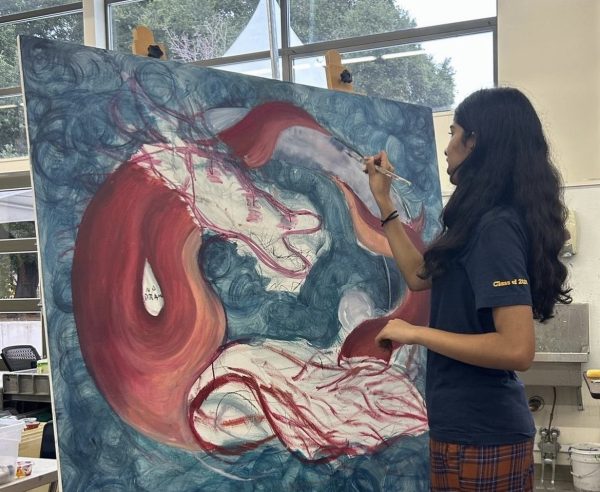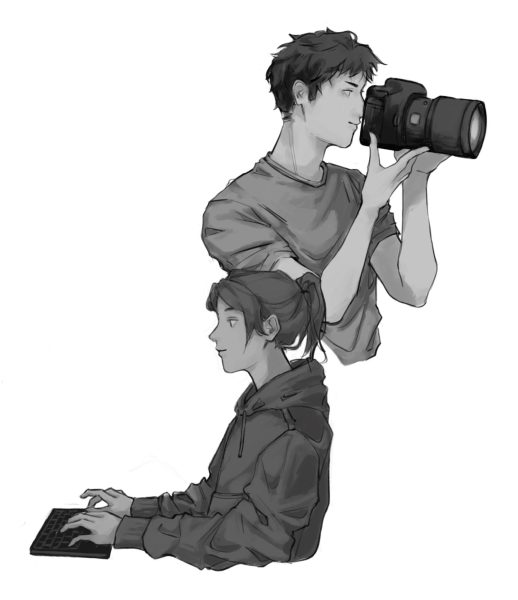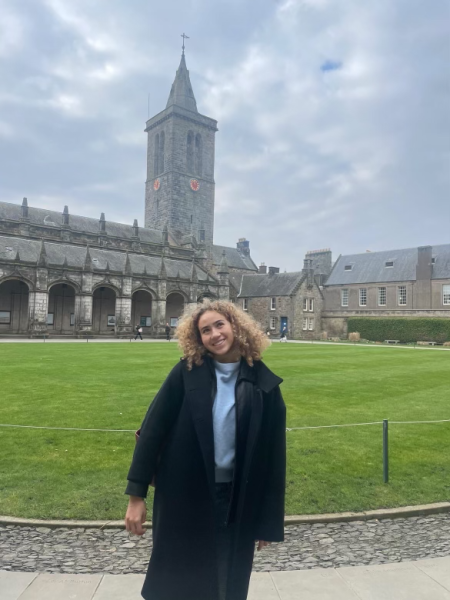Menlo Students Recognized by National Awards Program
Fujimori’s piece, titled “Storm,” portrays the complexity of the brain by comparing it to weather. Illustration by Austin Fujimori.
March 16, 2022
During the first semester, Menlo students in both art and English classes submitted their work to the Scholastic Art and Writing Awards, a program sponsored by Scholastic, an American publishing company. Over 230,000 middle and high school students from across the country submitted their pieces to this contest, but Scholastic only recognized 2,000 of them. All entries were automatically considered for five awards: a gold key, silver key, Honorable Mention, American Visions Nominee and American Voices Nominee.
Artwork submissions are divided into 16 categories including Drawing and Illustration, Expanded Projects, Painting, Digital Art and Sculpture. Writing submissions are divided into 10 categories including Dramatic Script, Poetry, Journalism and Personal Essay, Short Story and Memoir.
Junior Sean Nesamoney submitted an essay to the Personal Essay and Memoir category and won an honorable mention. In his essay, Nesamoney described a place that held personal significance for him: his grandparents’ house. “I wanted to describe its cultural significance for my family and intergenerational living,” Nesamoney said.
Instead of narration, Neasmoney wanted his story to be more visual and imagery-driven. “I wanted it to feel poetic and metaphorical,” Nesamoney said. “I feel like that’s probably what stood out, that [the piece] wasn’t just storytelling.”

For junior Dorinda Xiao, major current events and problems inspired her artwork. She submitted 16 art pieces to the Expanded Projects, Painting, Drawing and Illustration, Sculpture and Painting categories, and she received a total of two gold keys, three silver keys and three honorable mentions.
One of Xiao’s gold key pieces focused on the normalcy in the overuse of prescription drugs and the indifference of pharmaceutical companies that make them. The piece – made using a combination of photography, physical objects and photoshop – depicts an empty pill-covered wheelchair with the shadow of a human sitting behind it. “Taking the person away symbolizes how drugs destabilize society,” Xiao said. “Pharmaceutical companies don’t really care about that because they just make so much money off of it. People don’t wake up, really, and recognize the damage that it causes.”
For her Personal Essay and Memoir entry, junior Colby Wilson submitted a piece titled “I am Black.” “It’s how I define Black and what it specifically means to me. My main focus was on empowerment and an underlying tone of pride,” Wilson said. In her essay, Wilson addresses the lack of Black history taught in schools and the power imbalance she feels when walking into a classroom. In Wilson’s experience, the beginning of Black history in her classes is always slavery. On a more positive note, Wilson emphasizes her pride in her race and how it fuels her to work harder and makes her stronger. Wilson won a silver key for her piece.
Junior Austin Fujimori submitted his artwork to the category he thought would best fit his strengths: Digital Art. “I feel that digital artwork has much more potential and capabilities than non-digital artwork, and it is much easier to use as well,” Fujimori said.
Fujimori’s piece is a play on the word “brainstorm,” depicting a neon rainbow web against a dark background. “This was a part of my AP Portfolio, which focused on the topic of dreams,” Fujimori said. “I was trying to represent a brainstorm and how the brain is a universe.” Fujimori won one gold key, one silver key and one honorable mention for his work.













